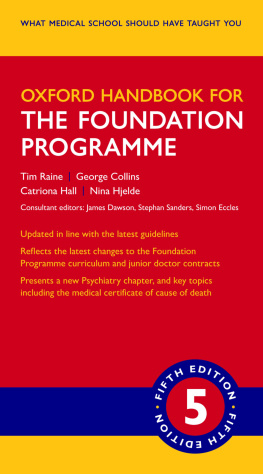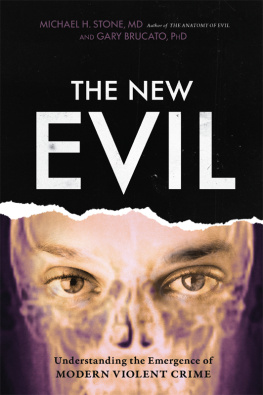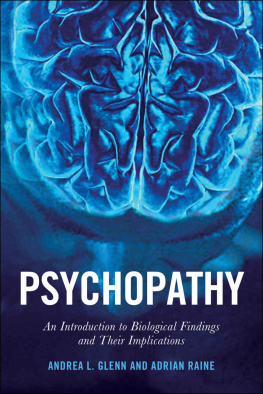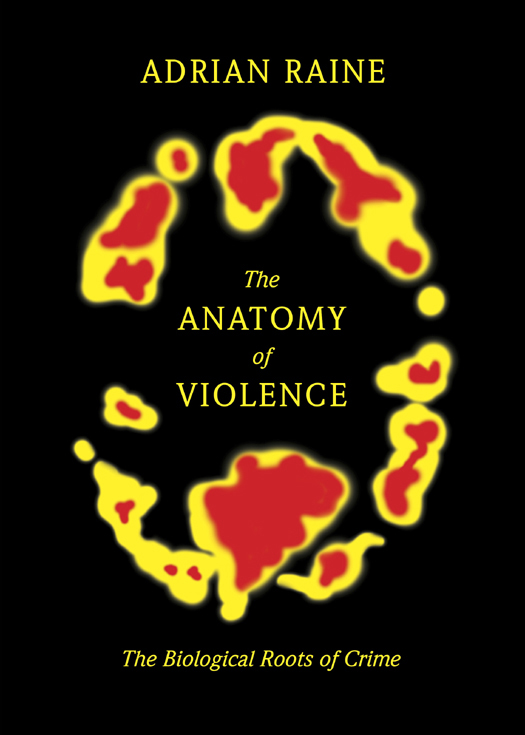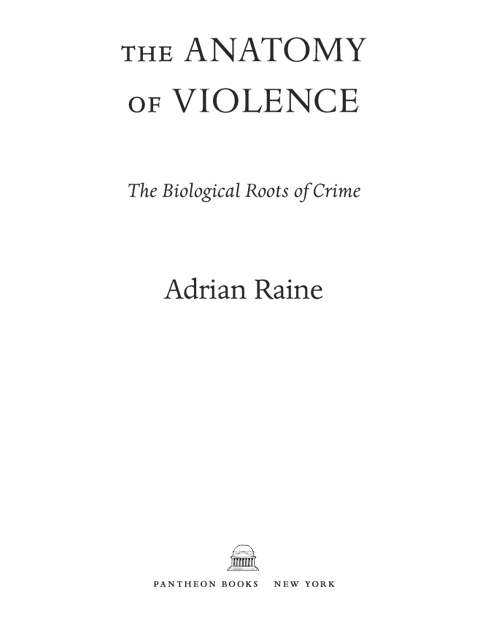ALSO BY ADRIAN RAINE
The Psychopathology of Crime
Violence and Psychopathy
Crime and Schizophrenia
Copyright 2013 by Adrian Raine
All rights reserved. Published in the United States by Pantheon Books, a division of Random House, Inc., New York, and in Canada by Random House of Canada Limited, Toronto.
Pantheon Books and colophon are registered trademarks of Random House, Inc.
eBook ISBN: 978-0-307-90778-3
Hardcover ISBN: 978-0-307-37884-2
Library of Congress Cataloging-in-Publication Data
Raine, Adrian.
The anatomy of violence : the biological roots of crime / Adrian Raine.
Pages cm
Includes bibliographical references and index.
ISBN 978-0-307-37884-2 (hardback)
1. ViolencePhysiological aspects. 2. ViolencePsychological aspects.
I. Title.
RC569.5.V55R35 2013 616.8582dc23 2012036952
www.pantheonbooks.com
Cover design and illustration by Kelly & Cardon Webb
Book design by Soonyoung Kwon
v3.1
To my sons, Andrew and Philip, in the hope that you will never fall by the wayside as so many in this book have, but will instead move along into happy and fulfilled lives. Dont worry too much about where the train is goingjust decide to get on board for wherever it will take you on lifes adventures. Believe in the spirit of giving at Christmas, remember Tintin, and never forget Sammy Jankis!
Oh, Agent Starling, you think you can dissect me with this blunt little tool?
Hannibal Lecter admonishing Clarice Starling for using a self-report instrument to assess him in Jonathan Demmes movie Silence of the Lambs
Contents
1. BASIC INSTINCTS
How Violence Evolved
2. SEEDS OF SIN
The Genetic Basis to Crime
3. MURDEROUS MINDS
How Violent Brains Malfunction
4. COLD-BLOODED KILLERS
The Autonomic Nervous System
5. BROKEN BRAINS
The Neuroanatomy of Violence
6. NATURAL-BORN KILLERS
Early Health Influences
7. A RECIPE FOR VIOLENCE
Malnutrition, Metals, and Mental Health
8. THE BIOSOCIAL JIGSAW PUZZLE
Putting the Pieces Together
9. CURING CRIME
Biological Interventions
10. THE BRAIN ON TRIAL
Legal Implications
11. THE FUTURE
Where Will Neurocriminology Take Us?
Preface
Its July 19, 2012, and its as hot as the hobs of hell here in Philadelphia. The air-conditioning in my work office conked out, so I came home to an airy upstairs library room to write this preface. I should have been filming a crime documentary this afternoon with a crew from Chicago, but they had their equipment stolen this morning. Thats not a surprise, though, as crime strikes all the time here in Philadelphia. Yesterday, I was dealing with two police detectivesLydon and Boylehere at my house, which had been burgled yesterday. Just what you want when you come back after midnight from Hong Kong. But I live close to my data, which is one reason I reside here in West Philadelphia.
Looking around this upstairs library, Im surrounded by hundreds of rare-edition books on crime and violence that the burglar didnt take. I suppose hes not as interested as we are in what causes crime. Theyre not my books, mind you. They belong to the people who lived here during the seventy-year period before I moved in. Most belong to Marvin Wolfgang, a world-renowned criminologist who, beginning in 1969, sat and wrote in this very library room. For the thirty years before that, Thorsten Sellin, another world-leading criminologist and Wolfgangs PhD supervisor, lived here, having bought the house just seven weeks before the outbreak of World War II. I am at his desk. For three-quarters of a century between the two of themprofessor and mentorthese intellectual giants in sociology redefined the field of criminology at the University of Pennsylvania, where I myself now work.
Given that remarkable criminological legacy, my mind inevitably turns to a historical perspective on the fundamental question addressed by this book. Is there a significant biological contribution to the causes and cures of crime? It turns out that that idea was all the rage 150 years ago, when an Italian doctor named Cesare Lombroso broke with intellectual tradition and, taking a novel empirical approach to studying crime, tried to persuade the world of a basis to crime residing in the brain. But as the twentieth century progressed, what was once an innovative viewpoint quickly fizzled out and sociological perspectives took center stage. During that time no criminologist worth his or her salt would have anything to do with an anatomy of violence or the biology of bad behavior.
Except, that is, the sociologist whose ghost lingers close to me beside the fireplace in this upstairs library overlooking Locust Street. Marvin Wolfgang documented in a far-reaching historical analysis of Cesare Lombroso that never in the history of criminology has a person been simultaneously more eulogized and more condemned. He noted how Lombroso continues to be held up as a straw man for attack by those hostile to a biological theory of crime causation. He recognized the clear limitations in Lombrosos research, yet simultaneously saw the enormous contributions that this Italian made.
Toward the end of his own career, Wolfgang himself became convinced that there wasin parta biological, cerebral basis to crime. His mentor Thorsten Sellin similarly believed that Lombrosos biological perspective, focusing as it did on the criminal rather than the crime, was unprecedented in its vitality and influence. Sharing their home and library as I do at this moment, I can hardly disagree with them.
Yet most in the field of criminology would disagree. Biological research on violence was vilified in the 1970s and 1980s, during my formative years as a scientist. Amid interdisciplinary rivalries the perception was that researchers like me were at best biological determinists who ignored social processesand at worst racist eugenicists.
Perhaps because of a rebellious and stubborn streak running through me, that negative perspective has never deterred me throughout my thirty-five years of researching the biology of crime. Nevertheless, working as I have within the confines of top-security prisons and ivory-tower universities, I have been shut off from a wider audience who might be just as excited as I am about what new insights a biological perspective can offer. It is that desire to share this research with a wider audience that inspired me to write this book.
In that context I owe an enormous debt of thanks to About fifteen years ago we had lunch together. Jonathan has a PhD in clinical psychology, had read and absorbed my academic work, and believed I had something important to share with others. He put me in touch with his own agent, and I wrote a proposal. It came to nothing. At that time, no matter how I tried, I could not get any publisher interested.
But times changed in those fifteen years. On the tails of the genome project, societies across the world have begun to realize the importance of genetic and biological factors in a whole host of processesand not just medical conditions. Serendipity struck. Eric Lupfer, an alumnus of the University of Pennsylvania and a literary agent at William Morris Endeavor, read a question-and-answer article about my work in our universitys magazine. Eric too recognized the potential public interest in a book on the anatomy of violence, and thanks to his outreach and vision, here I am completing the book in this historic room. I could not have had a more supportive, helpful agent. Sincere thanks are also due to Jeff Alexander at Pantheon for his splendid edits, vision, and guidance in the final throes of my writingthe time spent with him has been magical. Josie Kals and Jocelyn Miller at Pantheon provided invaluable support and help, and I am particularly indebted to my copy editor, Kate Norris, for her meticulous and careful fine-tuning of the manuscript. Thanks also to Helen Conford at Penguin for her strong enthusiasm and encouragement throughout this long march. Eric, Jeff, and Helen have together provided me with a wonderful opportunity for which I am truly grateful.




